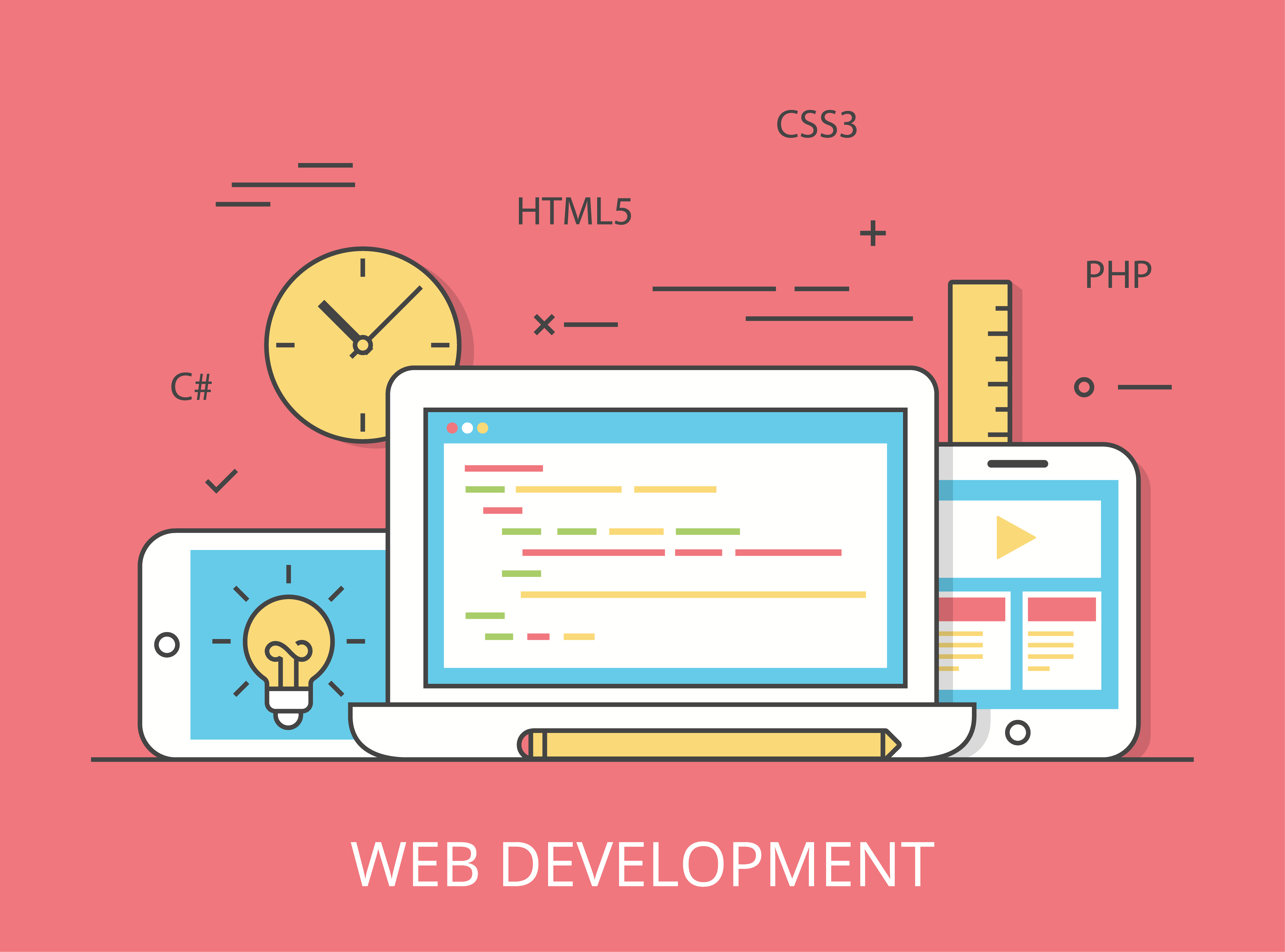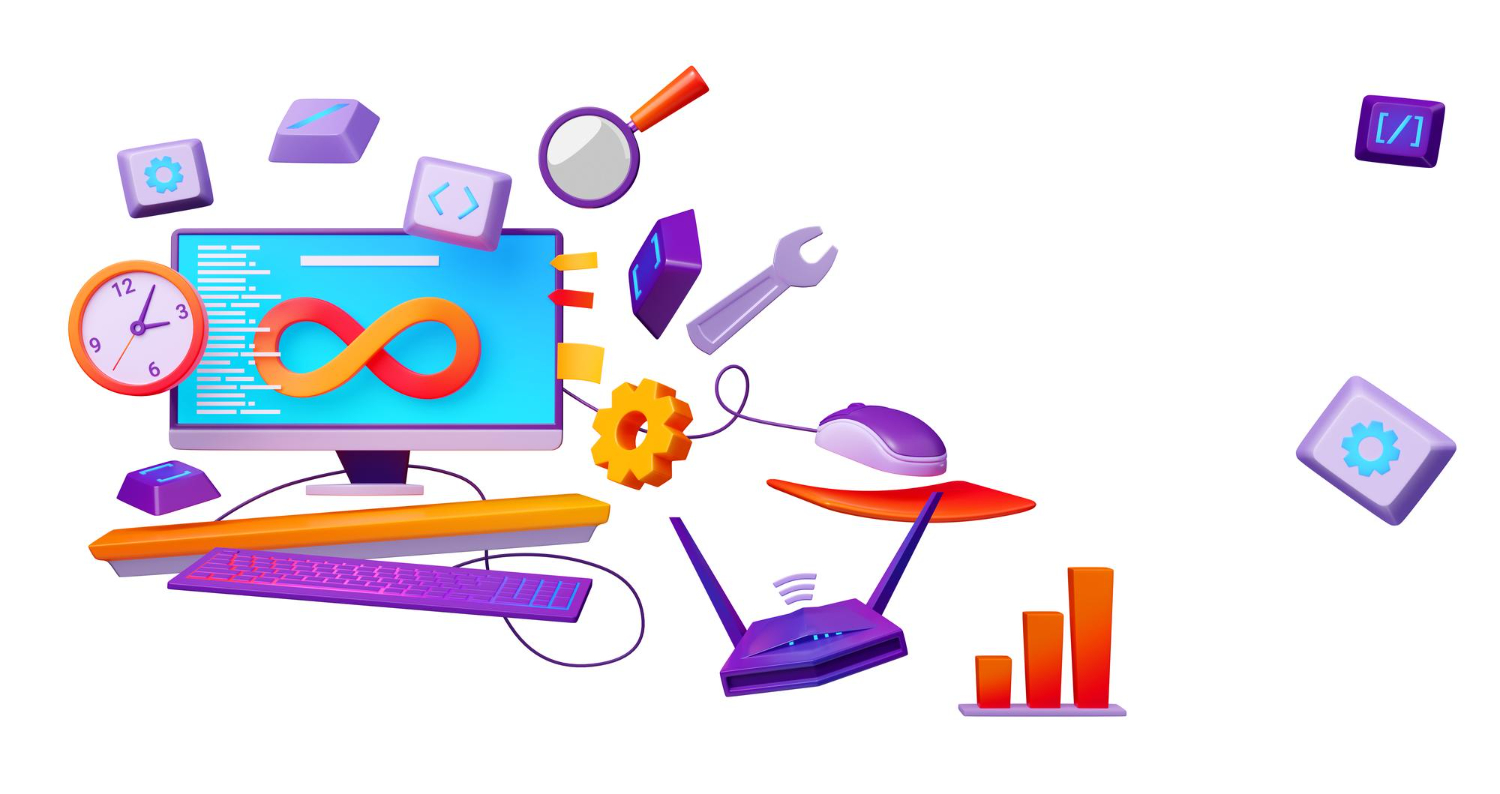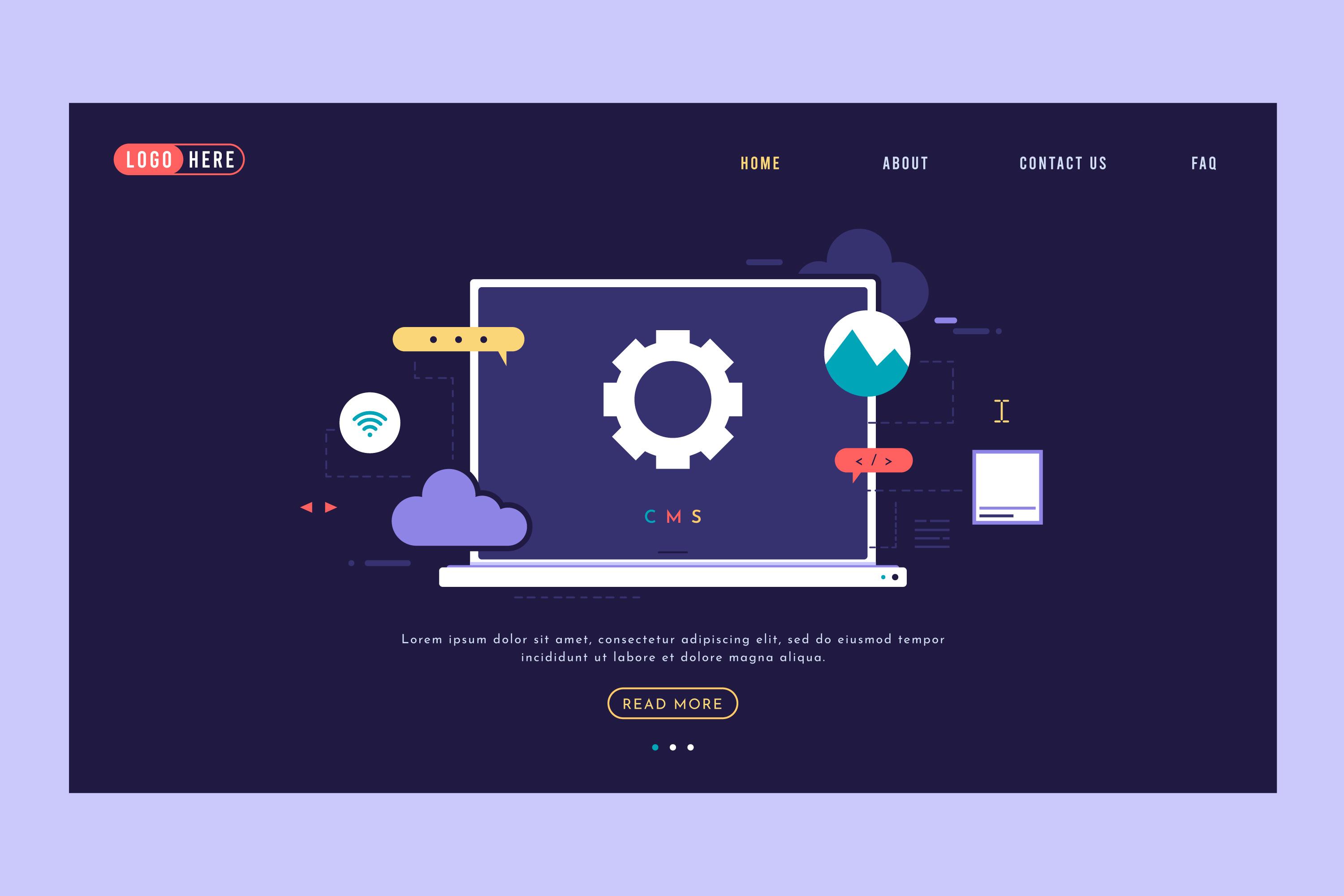Front-end web technologies are the tools and frameworks used to build the parts of a website or application that users interact with directly. These technologies are important because they help create the look, feel, and functionality of a site or app. Without front-end solutions, users wouldn’t be able to see or interact with anything on a website.
Do you want your website or app to look great and be easy to use? Front-end technologies can make that happen! They help you build a user-friendly design and make your website work well on different devices.

Core Front-End Technologies
Front-end technologies are the building blocks for creating websites and applications that people can see and interact with. These tools are a must-have for front-end web development services in 2025.
1. HTML5
HTML5 is the foundation of web development. It is the language used to structure the content on a webpage. With HTML5, developers can create headings, paragraphs, images, links, and more to organize the content of a website. HTML5 has many features that make it easier to create rich, interactive websites. It supports multimedia elements like audio and video, helping to make websites more engaging.
2. CSS3
CSS3 is the technology used to style and lay out web pages. With CSS3, developers can control how a webpage looks, including colors, fonts, spacing, and layout. It also allows for creating responsive designs, which means the website adjusts to different screen sizes, from phones to large desktop monitors. CSS3 also has features for adding animations and transitions, which can make websites feel more lively and interactive.
3. JavaScript
JavaScript is a scripting language that brings websites to life. It adds interactivity to web pages, allowing users to do things like click buttons, submit forms, or interact with maps. JavaScript can also be used to create dynamic updates on a webpage without needing to reload the whole page. This makes websites feel faster and more responsive. Many modern websites and front-end applications rely heavily on JavaScript for their functionality.
When building a front-end platform, these three technologies work together to create a complete web experience. Front-end technologies in Java can also play a role in modern web development, especially for adding interactive features and handling more complex user interactions.

JavaScript Frameworks and Libraries
JavaScript front-end frameworks and libraries are important tools for developers when creating websites and applications. These tools help developers build efficient, dynamic, and user-friendly interfaces quickly and easily. Here are some popular JavaScript frameworks and libraries that developers must use in front-end programming in 2025.
4. React
React is a popular UI technology and a library for building user interfaces. As of now, React is used by 5.5% of all websites whose JavaScript library is known, which makes up 4.4% of all websites. This widespread use reflects its popularity and reliability in the world of web development. It allows developers to create reusable components, which means they can build parts of a website that can be used in multiple places. React is efficient because it only updates the parts of the page that need to change, making websites run faster. Developers also like React because Facebook backs it and has a large community that can provide support and resources. It is great for building interactive websites and mobile apps, especially for projects where performance is key.
5. Angular
Angular is a full-fledged framework for creating large-scale web applications. Unlike React, which is only a library for building user interfaces, Angular gives developers a full toolkit to manage all aspects of the application. It includes tools for data management, routing, and testing, making it ideal for complex projects. Angular uses a specific structure, making it easier for teams of front-end developers to work together on larger applications. Its two-way data binding feature allows the model and the view to update automatically when data changes, which can make development faster.
6. Vue.js
Vue.js is another JavaScript framework known for being lightweight and easy to learn. It is often described as a mix of both Angular and React, combining features of both while remaining simple and flexible. Vue.js allows developers to build interactive user interfaces with less code than other frameworks. It is also easy to integrate into existing projects, making it a popular choice for developers who want to add modern features to older websites. Vue’s simple syntax and clear documentation make it a great option for beginners and those who want to build web applications quickly.
7. Svelte
Svelte is a unique framework because it doesn’t work like other JavaScript frameworks. Instead of running in the browser, Svelte compiles the code into efficient JavaScript that works faster. This means that developers don’t have to worry about managing the updates to the UI themselves. Svelte can be more efficient than other frameworks because it doesn’t need a virtual DOM (like React) to keep track of changes. This leads to faster performance and less overhead for websites and applications. It is ideal for front-end programming, where speed and performance are important.
8. Next.js
Next.js is a framework built on top of React, and it is used to create web applications with features like server-side rendering and static site generation. This makes Next.js an excellent choice for developers who want their sites to perform well in search engines, as search engines favor pages that load faster. With Next.js, developers can pre-render pages on the server before sending them to the browser, which helps websites load quickly. It also supports static site generation, making websites even faster and improving SEO. Next.js is commonly used to build websites and applications that need fast performance and good SEO results.
9. Nuxt.js
Nuxt.js is similar to Next.js but works with Vue.js. Just like Next.js, Nuxt.js provides features like server-side rendering and static site generation to improve both the speed and SEO of websites. It is a great choice for developers who prefer Vue.js over React but still want the same performance benefits that Next.js offers. Nuxt.js simplifies the development of front-end applications by providing many built-in features normally handled by third-party plugins in other frameworks. This makes it easy for developers to start building fast, dynamic websites.

CSS Frameworks and Preprocessors
CSS frameworks and preprocessors are tools that help front-end developers create websites and applications more easily. They save time by offering ready-made styles and features that can be used to build websites faster.
10. Tailwind CSS
Tailwind CSS is a utility-first CSS front-end framework that simplifies the process of styling websites. Unlike traditional CSS frameworks that come with predefined components, Tailwind provides a set of low-level utility classes. These classes allow you to apply styles directly in your HTML without writing custom CSS for every element. For example, instead of creating a custom class for a button, you can use utility classes like bg-blue-500, text-white, and p-4 directly in the HTML to create a button with a blue background, white text, and padding. This approach gives you full control over your design while reducing the amount of CSS you need to write.
11. Bootstrap
Bootstrap is a widely used CSS front-end framework that focuses on creating responsive, mobile-first websites. It provides a wide range of pre-designed components, such as grids, navigation bars, buttons, and forms, that you can use to quickly build a website without having to start from scratch. These components are customizable and have built-in support for responsiveness, helping websites work well across different screen sizes, from mobile phones to desktop computers.
12. Sass and Less
Sass and Less are popular CSS preprocessors that help make working with CSS easier and more efficient. These tools extend the basic functionality of CSS by introducing new features that streamline the process of writing and organizing styles. One of the most important features is the ability to use variables, which allows developers to store values like colors, fonts, and spacing in one place. This makes it easier to make global changes to a website, as updating a variable automatically updates all instances where it is used.
Build Tools and Package Managers
Build tools and package managers are essential for front-end developers to manage their projects more efficiently. These tools help organize, bundle, and optimize code, making development easier and faster.
13. Webpack
Webpack is a powerful tool used to bundle your project’s files together. It combines all your assets—like JavaScript, CSS, and images—into a single output file or smaller files that are easier for browsers to load. Webpack also optimizes your code for production, which helps your website run faster. It is commonly used in larger projects that require detailed control over how files are managed.
14. Parcel
Parcel is a simpler alternative to Webpack. It has fast build times and doesn’t require much configuration to get started. Parcel automatically handles most of the setup for you, making it easier for developers to build websites quickly. It’s a good choice for developers who want a simpler solution with good performance.
15. npm
npm, or Node Package Manager, is used to install and manage libraries and packages in your project. With npm, developers can easily add dependencies (like React or Vue.js) to their projects. It allows you to download, share, and manage the tools you need for your front-end platform.
16. Yarn
Yarn is a package manager similar to npm, designed for faster installation speeds. It offers features like offline mode and parallel installation, which help save time when managing packages. Yarn is known for its reliability, making it a great choice for projects with many dependencies. It helps developers manage packages efficiently, providing smooth project development without delays. With its speed and extra features, Yarn is a popular tool among developers working with complex projects.

Testing and Debugging Tools:
Testing and debugging tools help developers make sure their code works correctly and is free of errors. These tools allow developers to test and fix issues in their code quickly, ensuring better performance and user experience.
17. Jest
Jest is a widely used JavaScript testing framework that helps front-end developers test their code. It supports unit tests, integration tests, and end-to-end tests. Jest makes testing simple by automatically running tests and displaying results, allowing developers to spot and fix issues quickly. Its easy setup and built-in features make it a popular choice for testing JavaScript code efficiently and effectively. This helps developers create reliable applications with fewer bugs.
18. React Testing Library
React Testing Library is a library that helps developers test React components in a way that shows how users interact with them. It focuses on testing the actual user behavior rather than the internal structure of components. This tool helps developers make sure their React components work as expected in real-world scenarios, improving the user experience.
19. Chrome DevTools
Chrome DevTools is a powerful set of tools built into the Chrome browser. These tools help debug JavaScript, CSS, and network performance directly in the browser. With Chrome DevTools, developers can inspect elements, track network requests, and test different device views, all of which help debug issues faster and improve frontend platform performance.
Emerging Technologies
Emerging technologies are changing the way developers build websites and web applications. These best 2025 tools and methods offer exciting possibilities for making websites faster, more interactive, and more user-friendly.
20. WebAssembly
WebAssembly is a technology that allows you to run high-performance code directly in the browser. This means that web applications can now perform tasks that used to require a desktop or mobile app. With WebAssembly, developers can write code in languages like C, C++, or Rust and run it in the browser, making the web more powerful. This opens up new possibilities for web applications, such as games, video editing, and complex data processing, which can run directly in your browser without needing to install anything extra.
21. Progressive Web Apps (PWAs)
Progressive Web Apps (PWAs) are web applications that offer a native-like experience on the web. They can be accessed through a browser but behave like apps on a smartphone or tablet. PWAs allow users to use a web app offline and receive push notifications, features that were traditionally only available in mobile apps. PWAs load quickly, work offline, and are easy to install on your device, providing a smoother experience for users without the need to download an app from an app store. For front-end developers, PWAs are a great way to build fast, reliable, and engaging applications that users can access anywhere.
22. Server-Side Rendering (SSR)
Server-side rendering (SSR) is a technique where web pages are rendered on the server instead of in the browser. This means the browser receives a fully rendered page, which leads to faster load times and better SEO. SSR is especially useful for websites that need to rank high on search engines because search engines can easily read and index the content of the page. SSR helps improve the performance of web pages and ensures they load quickly, even for users with slow internet connections.
23. Jamstack
Jamstack is a modern web development architecture that combines JavaScript, APIs, and Markup to create fast, secure websites. With Jamstack, the content is pre-built and served from a CDN (Content Delivery Network), which makes the website load quickly and efficiently. It also uses APIs to handle dynamic functions, such as form submissions or user authentication. Jamstack focuses on separating the front end from the back end, which allows front-end developers to build both fast and secure websites. This approach makes managing, scaling, and maintaining websites easier without worrying about server-side issues.
24. Micro frontends
Microfrontends is an architectural approach that breaks down a web application into smaller, independent front-end pieces. Each piece, or micro frontend, works on a specific application part and can be developed, deployed, and updated independently. This approach is similar to microservices in back-end development but for the front end. Front-end developers can work on different application parts simultaneously without interfering with each other, leading to faster development and easier maintenance. Micro frontends are especially useful for large applications with many teams working on them, as each team can focus on one specific area of the app.

Exciting Front-End Web Development Project Ideas
Incorporating emerging front-end technologies offers many new opportunities for creating modern web applications. By using the best 2025 front-end platforms and tools, developers can build websites that are fast, easy to use, and full of interactive features. These front-end development technologies not only improve website performance but also help in creating dynamic and scalable applications. Whether you're working on small projects or large-scale applications, these tools and ideas will help you take on exciting front-end web development projects with confidence.
